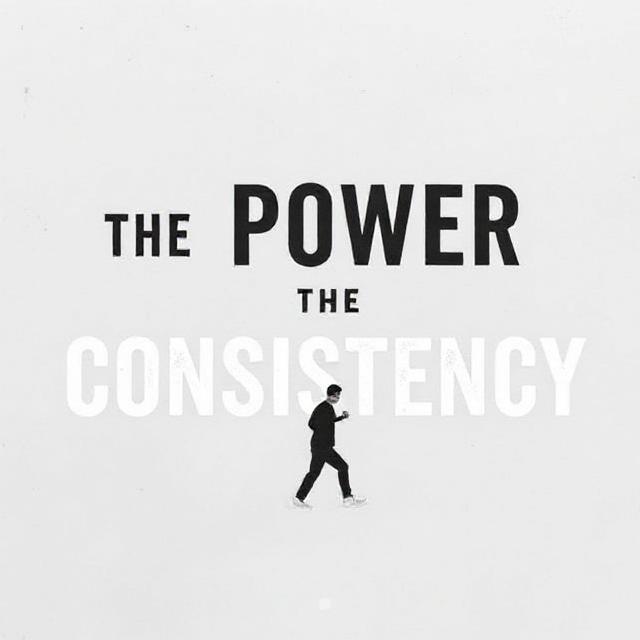
The way you think shapes the way you live. Your mindset influences how you see challenges, react to setbacks, and define success. Positive thinking isn’t about ignoring problems or pretending everything is perfect — it’s about choosing an optimistic, resilient perspective even when life is difficult.
When you develop the habit of positive thinking, you transform the way you approach personal growth. You start seeing opportunities instead of obstacles and possibilities instead of limits. This mindset doesn’t just make you happier; it makes you stronger, more creative, and more capable of growth.
1. Understanding the True Meaning of Positive Thinking
Positive thinking isn’t fake happiness or blind optimism. It’s not about denying negative emotions but managing them with awareness.
Real positive thinkers acknowledge challenges — they simply believe there’s always a way to grow from them.
For example:
- Instead of saying, “I failed again,” a positive thinker says, “I learned something important for next time.”
- Instead of saying, “I’m not good enough,” they say, “I’m improving every day.”
Positive thinking is a skill that can be learned and practiced. It’s the foundation of lasting personal development.
2. How Your Thoughts Shape Your Reality
Your mind is like a lens — how you focus it determines what you see. When your thoughts are negative, your perception narrows. You only see problems. But when you think positively, your awareness expands, and you start noticing options and solutions.
Psychologists call this the broaden-and-build theory. Positive emotions broaden your thinking and help you build new skills, relationships, and opportunities.
Example:
When you approach your work with enthusiasm, you become more productive and creative. When you face a challenge with confidence, your brain searches for solutions instead of excuses.
The more you train your mind to focus on the positive, the more your reality changes.
3. Why Positive Thinking Fuels Personal Growth
Personal growth requires stepping out of your comfort zone — and that takes courage. Positive thinking provides that courage by reshaping how you interpret fear and failure.
Here’s how it works:
- Positive thinkers take action faster. They focus on possibilities instead of worrying about what might go wrong.
- They recover from failure quicker. They view setbacks as feedback, not final defeats.
- They sustain motivation longer. Their belief in improvement keeps them consistent even during hard times.
Growth becomes easier when your inner dialogue supports you instead of attacking you.
4. Recognize and Reframe Negative Thoughts
Everyone has negative thoughts — they are a natural part of being human. The key is to catch them early and reframe them before they take control.
For example:
- “I’m not smart enough” → “I can learn what I need over time.”
- “This will never work” → “I’ll find a way to make this work better.”
- “I’m too late to start” → “It’s never too late to begin.”
Each reframe trains your brain to focus on growth, not defeat. The more you do it, the faster your brain learns to look for the positive automatically.
5. Practice Gratitude Daily
Gratitude is one of the most powerful tools for building a positive mindset. It shifts your focus from what’s missing to what’s already good in your life.
Try these daily habits:
- Write down three things you’re grateful for every morning.
- Thank someone verbally each day for something they’ve done.
- Reflect at night on what went well instead of what went wrong.
Gratitude changes your emotional state instantly. It turns ordinary moments into lessons and challenges into opportunities.
6. Surround Yourself with Positive Energy
Your environment influences your thinking more than you realize. If you constantly interact with negative, complaining, or fearful people, that mindset will slowly affect you too.
Surround yourself with people who:
- Encourage growth and new ideas.
- Focus on solutions, not just problems.
- Inspire you to become better, not bitter.
If you can’t find positive people nearby, fill your digital world with positivity — listen to inspiring podcasts, follow growth-oriented accounts, or read empowering books.
Positivity spreads through energy and connection. Choose your influences wisely.
7. Speak Positively — Words Shape Reality
Your words don’t just describe your life — they define it. Every time you speak, you reinforce beliefs about who you are and what’s possible.
Change your language from limiting to empowering:
- Replace “I have to” with “I get to.”
- Replace “I can’t” with “I’m learning how.”
- Replace “This is hard” with “This is a chance to grow.”
These small linguistic shifts create big mental changes. The more you use empowering language, the more confident and motivated you feel.
8. Visualize Success with Emotion
Visualization is not daydreaming — it’s a science-backed technique for training your mind. When you imagine success vividly, your brain activates the same neural pathways as if you were actually doing the task.
Here’s how to do it effectively:
- Close your eyes and imagine achieving your goal.
- Feel the emotions of success — pride, gratitude, relief.
- Picture the small steps that lead you there.
Visualization rewires your subconscious mind to expect success, which helps you take aligned action in real life.
9. Turn Challenges into Growth Lessons
Every setback can become a lesson if you approach it with the right mindset. Positive thinking doesn’t eliminate problems — it helps you respond to them with wisdom instead of panic.
When something goes wrong, ask yourself:
- What can I learn from this?
- How can this make me stronger?
- What will I do differently next time?
Each challenge becomes a personal development exercise. Over time, you begin to appreciate problems as teachers instead of enemies.
10. Make Positivity a Daily Practice
Positive thinking isn’t a one-time decision; it’s a lifelong habit. Like exercise, it gets easier with consistency.
Here are daily practices to maintain it:
| Positive Habit | How to Practice |
|---|---|
| Morning affirmations | Start your day by saying 3 positive statements about yourself. |
| Mindful breathing | Take 2 minutes to calm your mind when negative thoughts appear. |
| Uplifting content | Read or listen to one motivational piece daily. |
| Evening reflection | End your day by writing one thing you’re proud of. |
When you treat positivity as a practice, it becomes part of your personality — not something you have to force.
11. The Link Between Positivity and Health
Science supports the benefits of positive thinking beyond mindset. Studies show that positive thinkers tend to:
- Experience lower stress and anxiety levels.
- Have better heart health and immunity.
- Recover faster from illness or challenges.
Why? Because optimism reduces the body’s stress hormones and promotes resilience. A healthy mind truly contributes to a healthy body.
12. The Real Power — Creating a Positive Identity
True personal growth happens when positivity becomes your identity, not just a temporary attitude.
When you start identifying as someone who sees the good in situations, focuses on growth, and believes in their own potential, your actions automatically align with that belief.
You start taking risks, making better decisions, and spreading encouragement to others — because positivity becomes who you are.
Final Thoughts
Positive thinking is not magic. It doesn’t erase struggle — it transforms how you deal with it. It helps you see life not as a series of problems, but as a series of opportunities to grow stronger, wiser, and kinder.
When you practice gratitude, reframe negativity, visualize success, and focus on daily positivity, you begin to build a mindset that supports your goals.
Your thoughts create your world — so choose ones that help you grow into your best self.
Read More About: How to Build Confidence When You Feel Insecure



